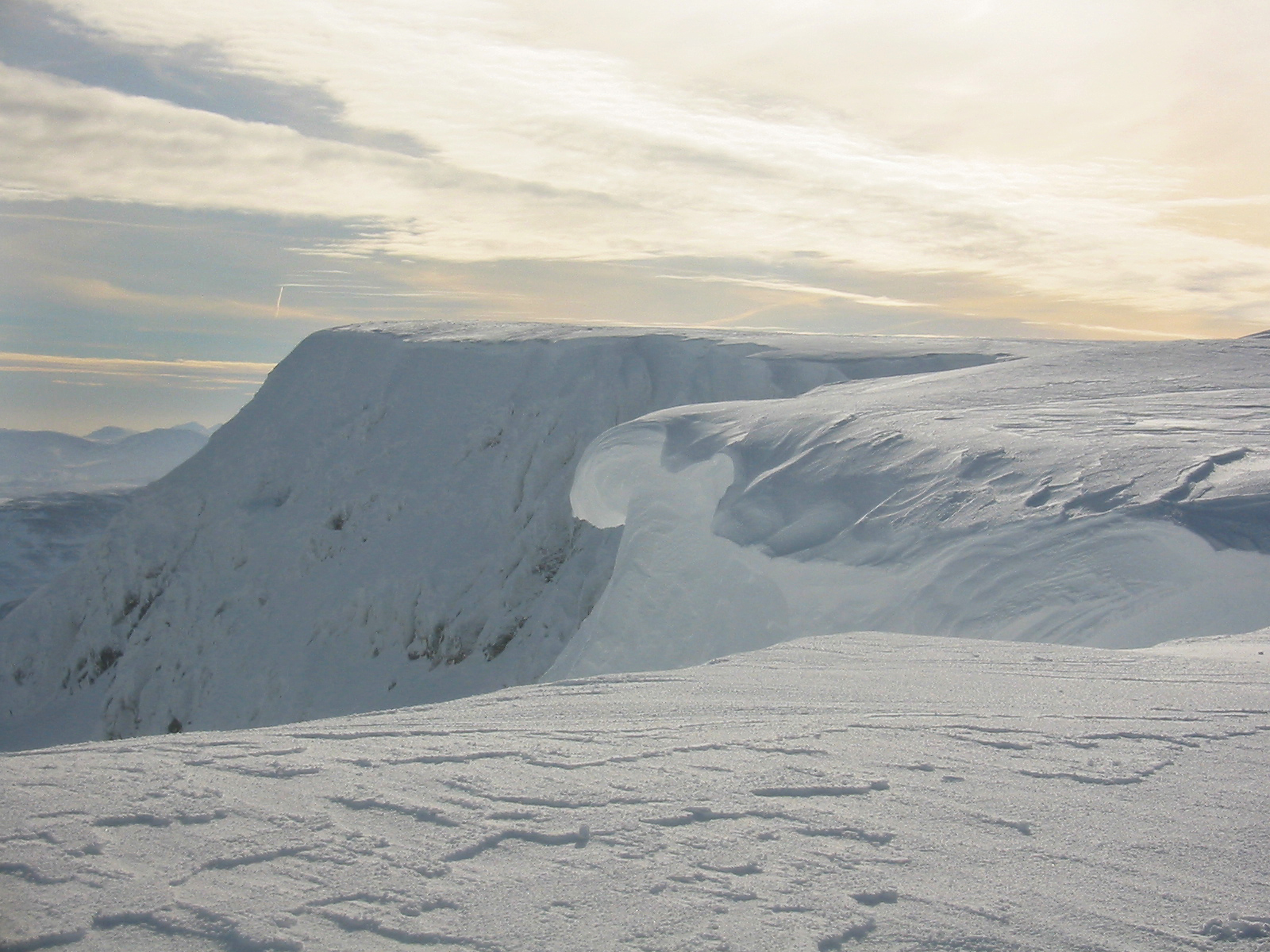 Safety experts are warning winter mountaineers to take care after avalanches struck climbers on Cairn Gorm.
Safety experts are warning winter mountaineers to take care after avalanches struck climbers on Cairn Gorm.
Three avalanches have been witnessed in recent days and more could follow, particularly in the now notorious Coire an t-Sneachda. Routes around Loch Avon are also at risk.
Cornices, such as this one on Aonach Mòr, are prone to sudden collapse
Scotland has seen good accumulations of snow this winter and more are forecast. But this late in the season, build-ups of unstable windslab and heavy cornices present a risk to walkers, climbers and mountaineers.
One of the avalanches, in Coire an t-Sneachda, was witnessed by Glenore Lodge instructor Giles Trussel. He told the Strathspey and Badenoch Herald: “As [a pair of climbers was] approaching, one of them was just carrying her helmet in her hand like a handbag.
“Both were wearing helmets when they got onto the slope, but they had no axes out.
“The couple took more of a direct line to the route than we would recommend, and just 15 metres from a safe spot, they triggered an avalanche.
He said one of the pair tumbled downwards, but the other was orientated upwards. His party watched them all the way down in and out of the snow.
“They stopped ten metres from the boulders. If they had been slightly further right, they would have gone over some rocks,” he said.
“Both stood up after a few seconds and started to move around. They stood there for around five minutes, obviously shaken, and then turned round and headed back. It was a good decision, probably.”
Mark Diggins, who works for the Scottish Avalanche Information Service (SAIS), said that often mountaineers were blinkered to the dangers of avalanches, focusing on their climb.
He said many mountaineers naively believed avalanches do not occur in Scotland, but they do. Four climbers were killed on Aonach Mòr’s T&G Gully in 1998. Three others survived the avalanche despite being buried in snow for 14 hours.
Conditions on the northern Cairngorms, which include Coire an t-Sneachda, were forecast to be at category three – considerable risk – tomorrow, with similar risk in Glencoe and Lochaber, and a category two in the southern Cairngorms, but a high risk – category four – in Creag Meagaidh, where unstable windslab and collapsing cornices are likely on all aspects from the north-eastern round to the southern after heavy overnight snow.
Don’t go on to the Scottish mountains without checking the SAIS site first. It costs £130,000 a year to run and real people go up on to the hills to test the risk so you can be safer.
And remember: helmets go on heads, not in your hand.